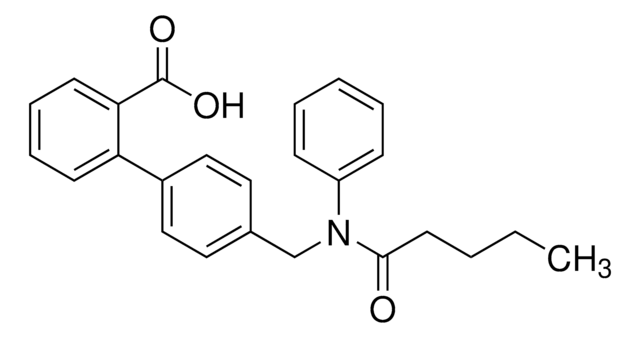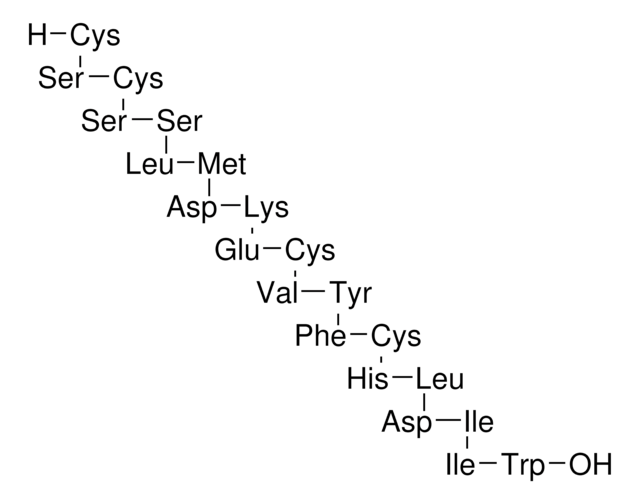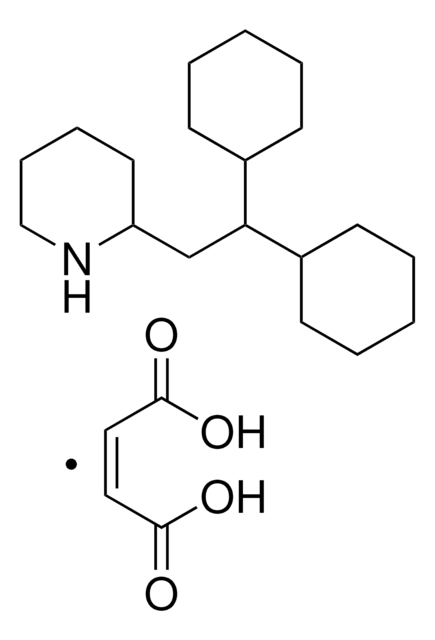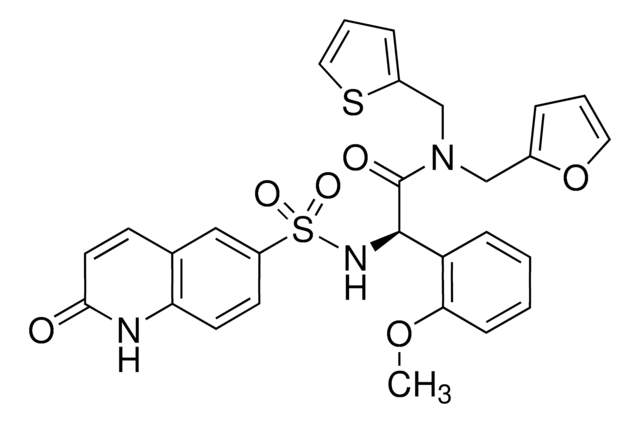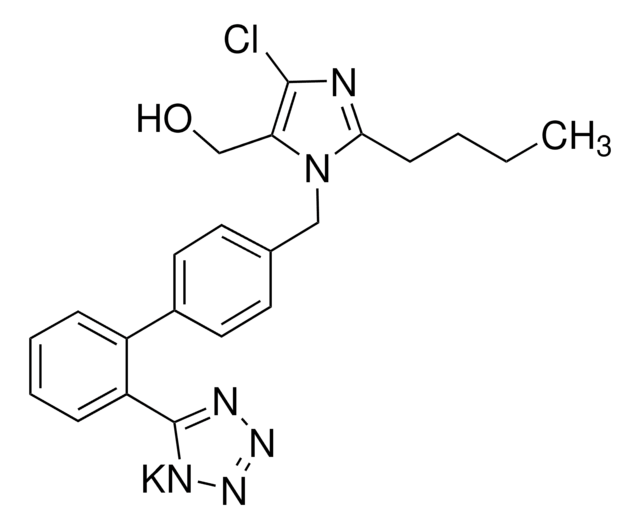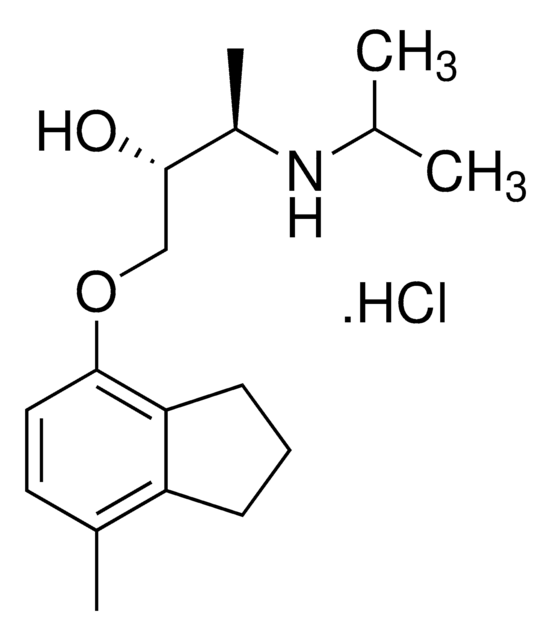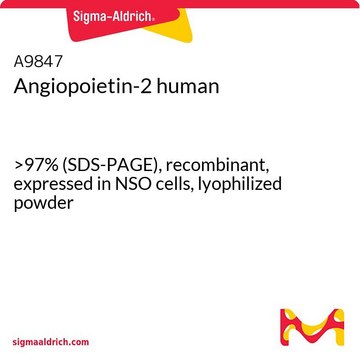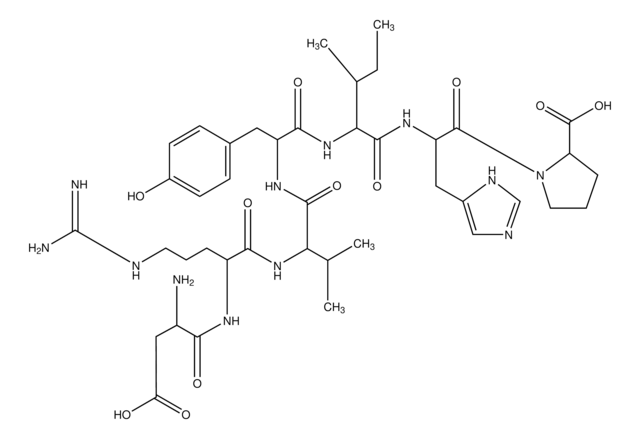P186
PD 123,319 di(trifluoroacetate) salt hydrate
powder, ≥98% (HPLC)
Synonyme(s) :
S-(+)-1-[(4-(Dimethylamino)-3-methylphenyl)methyl]-5-(diphenylacetyl)-4,5,6,7-tetrahydro-1H-imidazo[4,5-c]pyridine-6-carboxylic acid di(trifluoroacetate) salt hydrate
About This Item
Produits recommandés
Essai
≥98% (HPLC)
Forme
powder
Conditions de stockage
desiccated
Solubilité
H2O: 10 mg/mL, clear
Température de stockage
2-8°C
Chaîne SMILES
O.OC(=O)C(F)(F)F.OC(=O)C(F)(F)F.CN(C)c1ccc(Cn2cnc3CN([C@@H](Cc23)C(O)=O)C(=O)C(c4ccccc4)c5ccccc5)cc1C
InChI
1S/C31H32N4O3.2C2HF3O2.H2O/c1-21-16-22(14-15-26(21)33(2)3)18-34-20-32-25-19-35(28(31(37)38)17-27(25)34)30(36)29(23-10-6-4-7-11-23)24-12-8-5-9-13-24;2*3-2(4,5)1(6)7;/h4-16,20,28-29H,17-19H2,1-3H3,(H,37,38);2*(H,6,7);1H2/t28-;;;/m0.../s1
Clé InChI
PTSUEYBWHKDYBS-FPCIESGBSA-N
Vous recherchez des produits similaires ? Visite Guide de comparaison des produits
Application
- To determine the effect of Angiotensin II (Ang II) on alveolar fluid clearance (AFC).
- To study the effect of PD123319 on AngII-induced abdominal aortic aneurysms (AAAs).
- To study its effect on Ang II-induced LRP1 overexpression and function in vascular smooth muscle cells (VSMCs) culture.
Actions biochimiques/physiologiques
Attention
Mention d'avertissement
Warning
Mentions de danger
Conseils de prudence
Classification des risques
Eye Irrit. 2 - Skin Irrit. 2 - STOT SE 3
Organes cibles
Respiratory system
Code de la classe de stockage
11 - Combustible Solids
Classe de danger pour l'eau (WGK)
WGK 3
Point d'éclair (°F)
Not applicable
Point d'éclair (°C)
Not applicable
Équipement de protection individuelle
dust mask type N95 (US), Eyeshields, Gloves
Faites votre choix parmi les versions les plus récentes :
Déjà en possession de ce produit ?
Retrouvez la documentation relative aux produits que vous avez récemment achetés dans la Bibliothèque de documents.
Les clients ont également consulté
Notre équipe de scientifiques dispose d'une expérience dans tous les secteurs de la recherche, notamment en sciences de la vie, science des matériaux, synthèse chimique, chromatographie, analyse et dans de nombreux autres domaines..
Contacter notre Service technique
